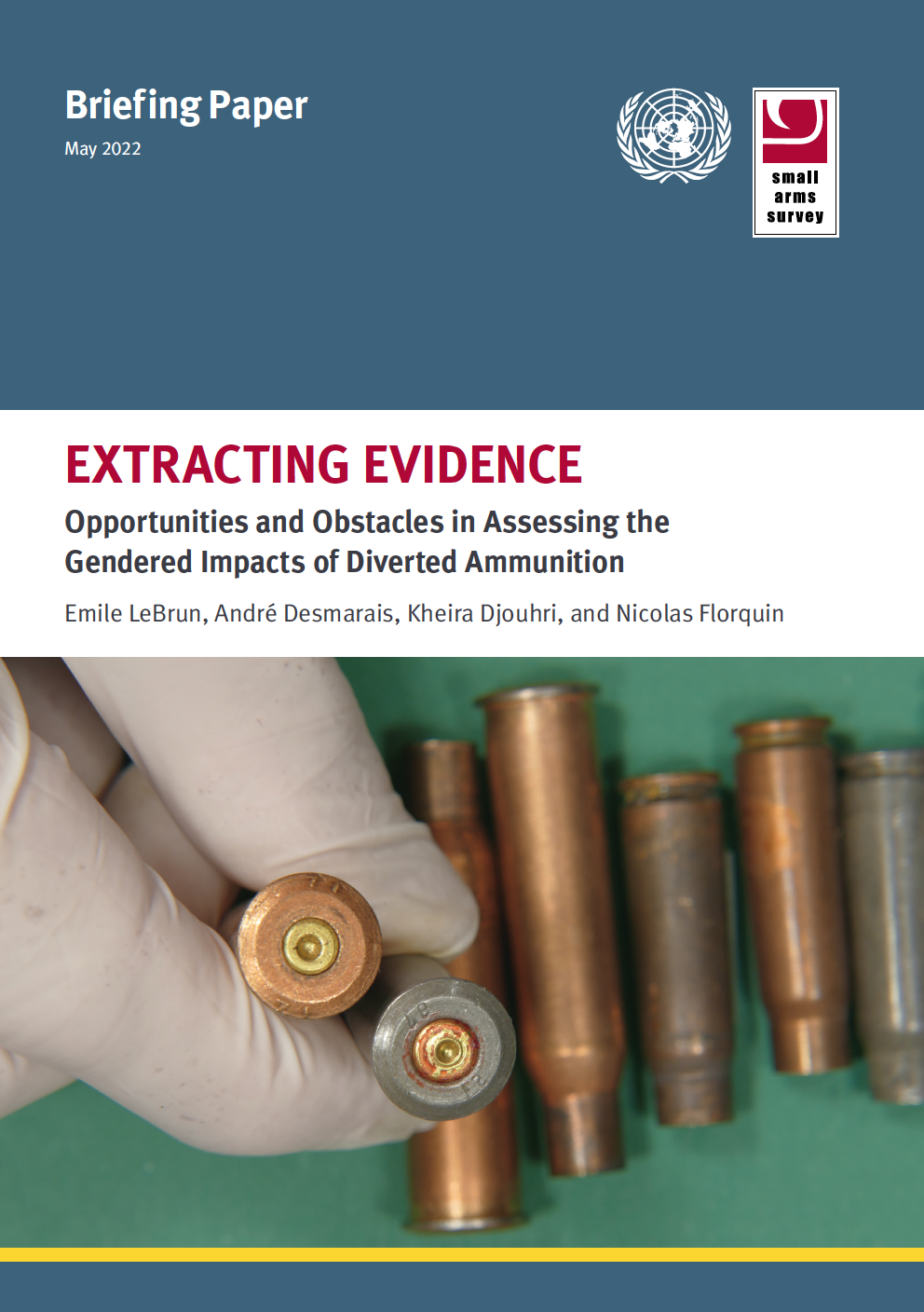
Extracting Evidence: Opportunities and Obstacles in Assessing the Gendered Impacts of Diverted Ammunition
Ammunition diverted from legal to illicit markets is a central concern in small arms control, but its impact is understudied. A new Briefing Paper from the Small Arms Survey and the UN Office for Disarmament Affairs explores how authorities can go about better monitoring the role it plays in violent crime.
Extracting Evidence: Opportunities and Obstacles in Assessing the Gendered Impacts of Diverted Ammunition unpacks the challenges involved in trying to assess the true costs of ammunition diverted from official stockpiles. The study describes contextual background, notes the limitations of ammunition profiling research to date, and presents findings from a pilot case study on ammunition profiling in Kosovo* as well as insights from ammunition marking policy in Brazil. It finds that authorities struggle to identify what materiel among seized ammunition has been diverted from official stockpiles, which in turn prevents the ability to truly assess the impact it has on men, women, boys, and girls.
The study identifies measures for overcoming such monitoring challenges, including special marking practices for state-destined ammunition, headstamp data collection guidelines, and information sharing protocols between relevant agencies for ammunition recovered from crime scenes.
*The designation of Kosovo is without prejudice to positions on status and is in line with UN Security Council Resolution 1244 and the International Court of Justice Opinion on the Kosovo declaration of independence.